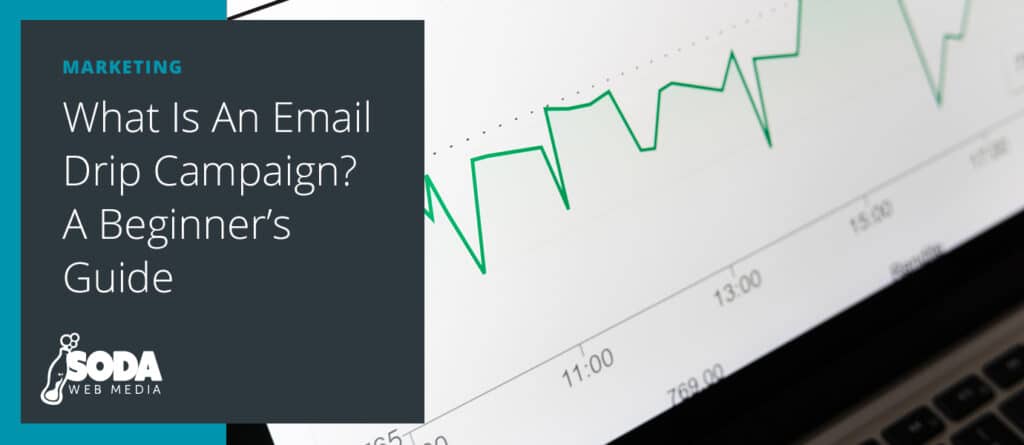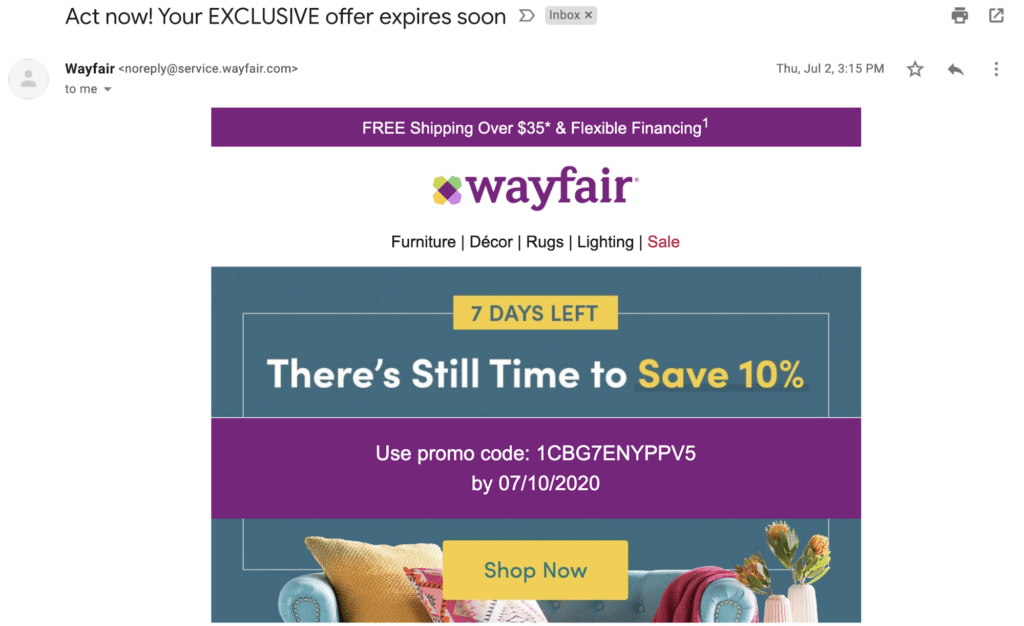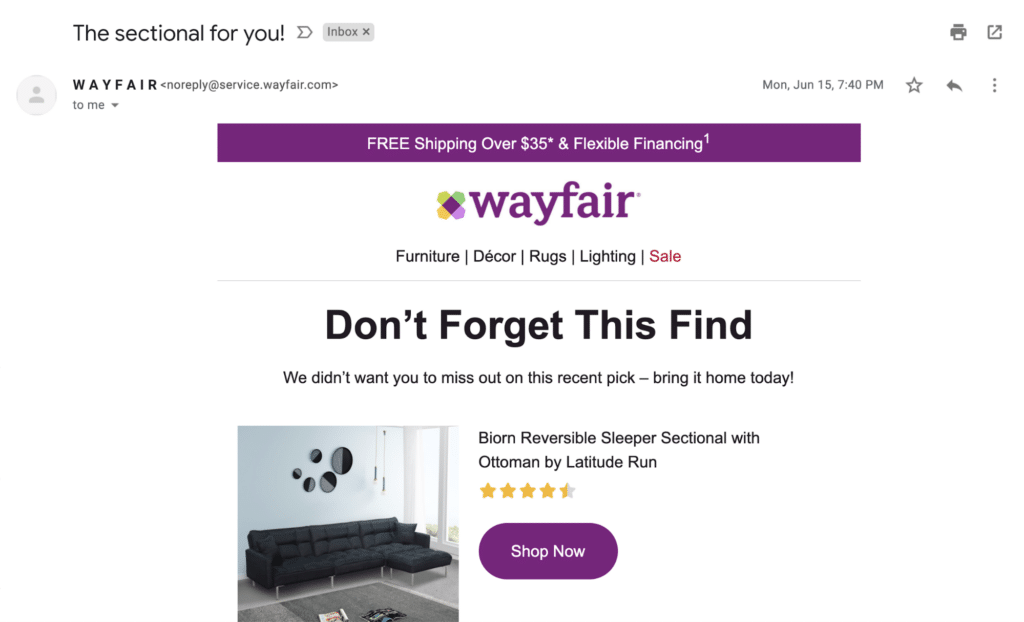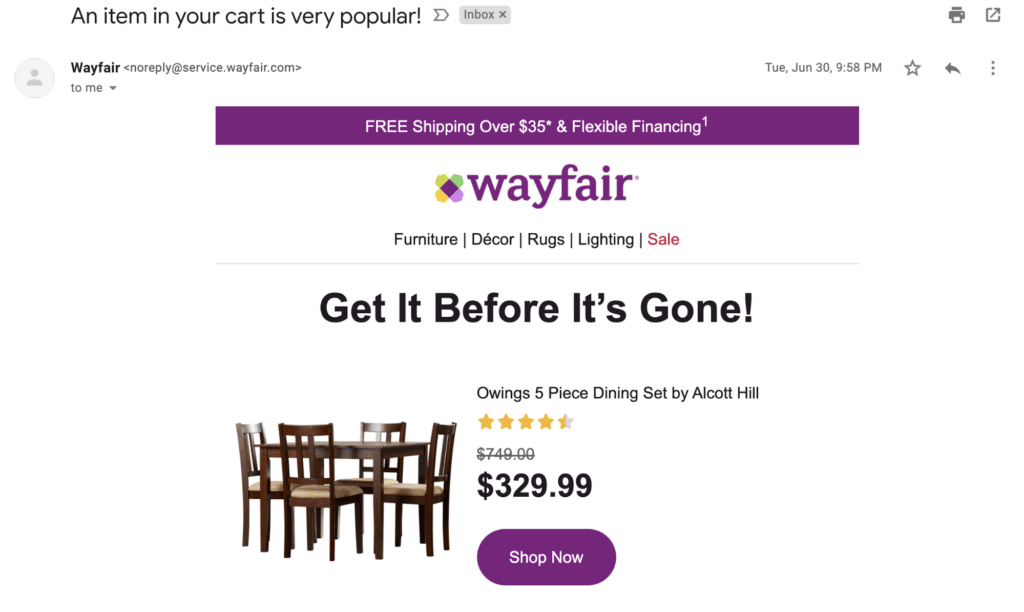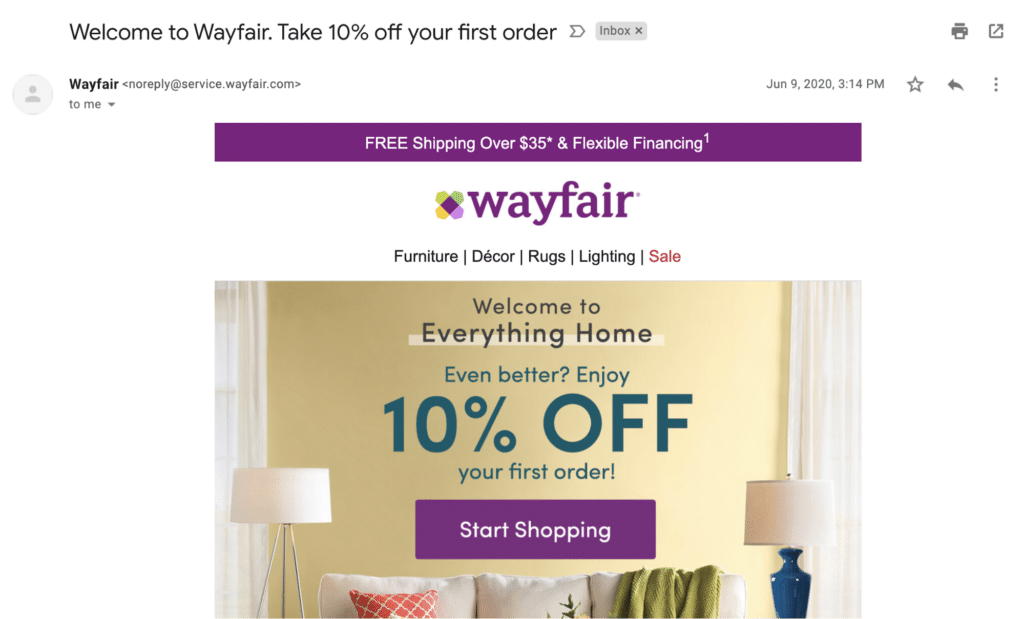There’s no doubt that email should be a part of almost any company’s marketing efforts. With ROIs as high as $44 for every $1 spent, email is one of the most cost-effective and powerful marketing channels available to businesses.
But not all campaigns are created equal. While regular newsletter campaigns are a good starting point, to truly get the most out of email marketing, you’ll need to use more advanced techniques.
Which brings us to email drip campaigns: automated email campaigns that send emails based on user actions or pre-determined timelines. Here, we’re going to go over the basics of email drip campaigns, give you some examples of them, and explain what makes them work.
Finally, we’ll give you some tips on how you can plan your own campaign so that your emails are received like refreshing drops of dew instead of drops in an unrelenting episode of email water torture.
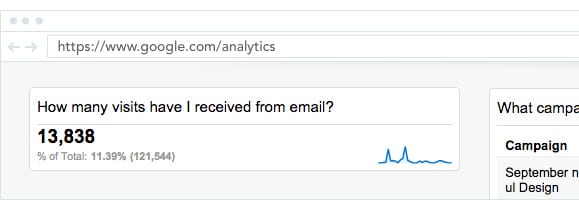
What Is An Email Drip Campaign?
An email drip campaign, also known as a lifecycle or automated email campaign, is a marketing strategy that uses automation to send out emails at specific points in the customer lifecycle. For example, a business implementing a drip campaign may send out a welcome email immediately upon signup, a follow-up two weeks later, and finally, a “we miss you” email after a month has gone by with no engagement from the subscriber.
Emails in a drip campaign can either be based entirely on a predetermined timeline, or they can react to user behavior. In the former case, a subscriber would receive the same email sequence no matter what they do. In the latter, the sequence would react to the customer’s behavior and tailor the emails to their actions — like sending out an email asking how they liked their last purchase, for example.
Both of these methods improve upon a major weak spot of traditional email: customers and leads will inevitably sign up at different points in time, so without automating your emails, some users will miss out on emails that were sent before they signed up.
For example, if you start your campaign in early March and someone signs up in late April, that new subscriber would miss out on a ton of great emails. But if you use a drip campaign, you’d be able to serve up that same sequence to every subscriber no matter when they sign up. Plus, you’d be able to tailor it to every user’s actions to ensure that your emails are always relevant and don’t make your receivers unsubscribe.
What Are the Benefits of an Email Drip Campaign?
In short, they’re typically more effective than regular email campaigns. With email drips, you not only ensure that all your subscribers are getting your highest-converting emails, but you can also change up the sequence based on individual users’ actions. In email marketing, that personalization is key: 70% of millennials say that they’re frustrated by brands that send irrelevant batch emails and don’t personalize the experience.
To see some of the benefits of email drip campaigns, let’s start with one instance: welcome emails. According to a white paper by Experian (PDF), the open rate for welcome emails is between 46% and 53%, which is 2-3x the average email open rate of 15-25%. Welcome emails that are sent instantaneously, however, have an even higher open rate of 88% — that’s 3-5x the average open rate.
Without an email drip, you wouldn’t reap the benefits of that exceedingly high open-rate. And without automation, you’d be stuck periodically sending out welcome emails in bulk on a daily, weekly, or monthly basis. That’s not only more time consuming, but it’s simply less effective.
Once your subscribers are introduced to your sequence, you can then start targeting your emails based on user behavior, which gives you all the benefits of personalization. Study after study confirms that relevant emails are vital to the success of your email campaigns: 91% of consumers are more likely to shop with brands that send personalized offers and recommendations, and 72% of consumers in 2019only engaged with brands that sent out personalized marketing materials.
Essentially, email drip campaigns provide two main advantages over regular campaigns: they make sure your emails reach the right people at the right time.
Example of an Email Drip Campaign
So, now that we’ve got some of the basic concepts of email drip campaigns under our belts, let’s take a look at a real-world example.
A few weeks ago, I moved into a new house and found myself needing to furnish it. Like many, I created an account on Wayfair. Immediately upon signing up for their mailing list, I was presented with this welcome email:
After spending a bit of time on the site and looking through a few items, I received this email based on one of the products I had been looking at:
Eventually, I received an abandoned cart email:
Finally, precisely three weeks after signing up and not having made a purchase, I got this:
This series of four emails serves as an excellent overview of what an email drip campaign can look like. It includes four of the most common types of drip campaign emails: welcomes, recommendations, abandoned carts, and follow-ups.
So, what can we gather about Wayfair’s drip strategy from this sequence? For one, Wayfair used reactive emails, not just pre-scheduled emails. Their drip sequence reacted to my actions, which made it more personalized and relevant to me.
When I expressed interest in a piece of furniture, they sent me an email to make sure I didn’t forget about it. When I added an item to my cart and then abandoned it, they let me know that the product was going fast to create a sense of urgency and push me to click the checkout button. Finally, when nearly a month had gone by and I hadn’t made any purchases, they sent me a reminder that I had an unused discount code in an attempt to re-engage me.
There is a clear arc here: the beginning is an introduction, the middle reacts to my actions, and the end is an email that makes a final attempt to reconnect. While I ended up making a purchase shortly after receiving that last email, if I hadn’t, I may have started to receive fewer emails or been segmented into a list of subscribers that Wayfair would try to re-engage with at a later time.
How to Run an Email Drip Campaign
If the benefits of email drips seem appealing, here are the steps you’ll need to take to start one of your own:
Step 1: Set a Goal
Without a clear goal in mind, your campaign will end up being a lot of wasted effort. To start, evaluate your current performance and decide where you’d like to see some improvement. For example, are too many leads abandoning their carts? Do you want more engagement?
When setting your goal, be SMART: specific, measurable, achievable, relevant, and time-bound. Don’t say you want to increase sales. Say you want to hit 2,000 sales over the next month. That way, you’ll be able to precisely evaluate your campaign’s performance and adjust your next one accordingly.
Step 2: Figure Out How to Segment Your List
List segmentation is at the core of email drip campaigns — drips work because businesses can group subscribers based on shared behaviors and send out emails to only the most interested users. To craft an effective campaign, you’ll need to know what types of actions you’re targeting so you can segment your leads accordingly.
Consider your goal and decide what types of behaviors you’ll need to target to achieve it. If you’re trying to increase sales, you may want to group subscribers based on the product categories they looked at. Alternatively, you may want to segment your list based on how long individuals have been subscribed, which emails they opened, or age demographics. The segmentation criteria are entirely up to you, but make sure they line up with your goal.
Step 3: Choose an Email Marketing Service
If you want to do a good job, you’ll need the right tools. There are tons of email marketing services out there, and almost all of them offer automation features. However, if drip campaigns are your priority, we recommend AWeber or ActiveCampaign because of their focus on automated campaigns.
Step 4: Write Your Copy and Plan Your Emails
Drip campaigns reuse the same store of emails on different customers. So, before you start, you’ll need to come up with a substantial number of killer emails that you can send out at various points in the customer lifecycle.
You may want to enlist the help of a professional at this point, as a skilled copywriter can significantly increase your ROI. If you’re going to tackle the copy yourself, make sure you test out several different versions with split testing so that you send only the most effective emails.
Once your emails are ready, you’ll need to figure out what actions should trigger them. Like copywriting, this is as much an art as it is a science, and it will take a lot of trial and error to get right.
Step 5: Pull the Trigger and Adjust As You Go
Once all the pieces are in place, it’s time to let your campaign fly. But your work is by no means over: you’ll still need to track its performance and make adjustments based on your analytics. If your campaign has a set end date, then you’ll want to evaluate its performance afterward and use those results to improve your next one.
Bringing It All Home
By now, you should have a good grasp on the basics of an email drip campaign. But this is just the start of your journey. If you want to master the art and science of email marketing, you’ll need to get out there, try, fail, and try again. Keep learning, keep doing, and eventually, you’ll see results.

